Modeling in Science
Modeling in science is the process of creating representations of real objects, systems, or processes to help us understand and explain how they work. Models can be physical (like a toy car), visual (like a diagram), or mathematical (like a graph). They help scientists and students visualize and understand complex concepts by simplifying and representing them in a more manageable way.
Types of Models
There are different types of models used in science:
- Physical Models: These are actual objects that represent something else, like a globe to represent the Earth.
- Visual Models: These are drawings, diagrams, or charts that represent something, like a diagram of the water cycle.
- Mathematical Models: These are equations, graphs, or computer simulations that represent real-world phenomena, like a graph showing the relationship between temperature and ice melting.
Why We Use Models
We use models in science for several reasons:
- To simplify complex ideas and make them easier to understand.
- To make predictions and test hypotheses about how things work.
- To communicate and share our understanding of natural phenomena with others.
- To design and create new technologies and innovations.
Studying Modeling in First Grade
For first-grade students, learning about modeling can involve simple activities and observations:
- Building models of familiar objects using building blocks or clay.
- Creating simple diagrams or drawings to represent familiar processes, like the water cycle or the life cycle of a butterfly.
- Using models to make predictions, such as predicting what will happen when a toy car is pushed down a ramp at different angles.
- Exploring and discussing everyday objects and how they can be represented using models, such as a model of a car or a tree.
Understanding modeling at this early stage sets the foundation for more advanced scientific concepts in the future.
.◂Science Worksheets and Study Guides First Grade. Human body
Study Guide Human body
Human body  Activity Lesson
Activity Lesson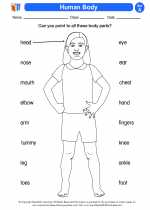 Human Body
Human Body  Worksheet/Answer key
Worksheet/Answer key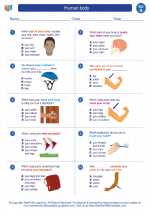 Human body
Human body  Worksheet/Answer key
Worksheet/Answer key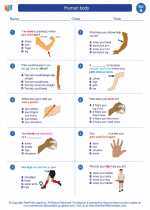 Human body
Human body  Worksheet/Answer key
Worksheet/Answer key Human body
Human body  Worksheet/Answer key
Worksheet/Answer key My Senses
My Senses  Worksheet/Answer key
Worksheet/Answer key Human Body
Human Body  Worksheet/Answer key
Worksheet/Answer key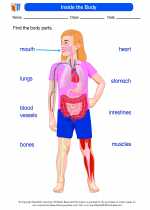 Inside the Body
Inside the Body  Vocabulary/Answer key
Vocabulary/Answer key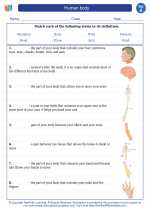 Human body
Human body  Vocabulary/Answer key
Vocabulary/Answer key Human body
Human body 

 Activity Lesson
Activity Lesson
 Worksheet/Answer key
Worksheet/Answer key
 Worksheet/Answer key
Worksheet/Answer key
 Worksheet/Answer key
Worksheet/Answer key
 Worksheet/Answer key
Worksheet/Answer key
 Worksheet/Answer key
Worksheet/Answer key
 Worksheet/Answer key
Worksheet/Answer key
 Vocabulary/Answer key
Vocabulary/Answer key
 Vocabulary/Answer key
Vocabulary/Answer key

The resources above cover the following skills:
LIFE SCIENCE
From Molecules to Organisms: Structures and Processes
Design a solution to a human problem by using materials to imitate how plants and/or animals use their external parts to help them survive, grow, and meet their needs (e.g., outerwear imitating animal furs for insulation, gear mimicking tree bark or shells for protection).